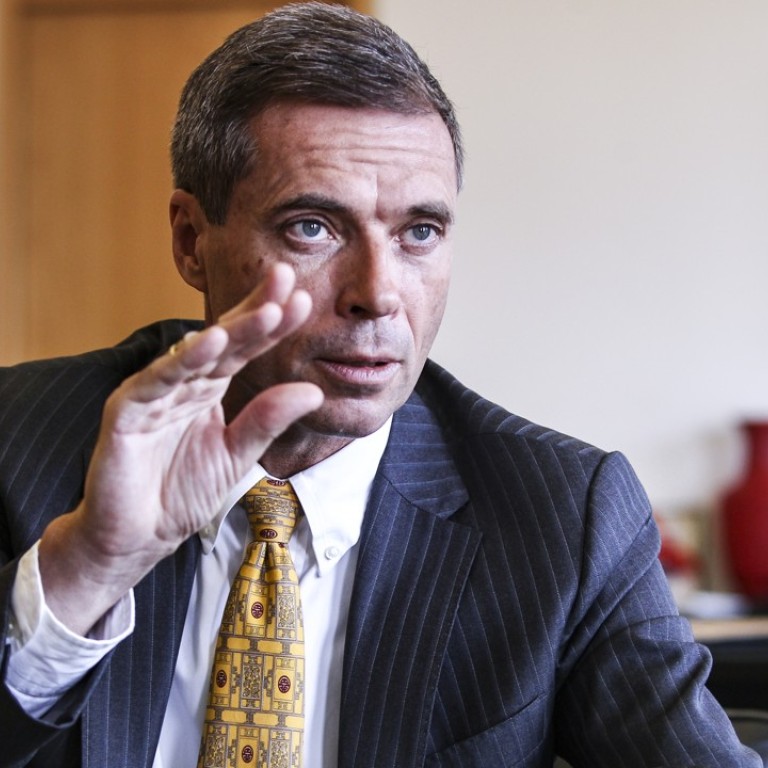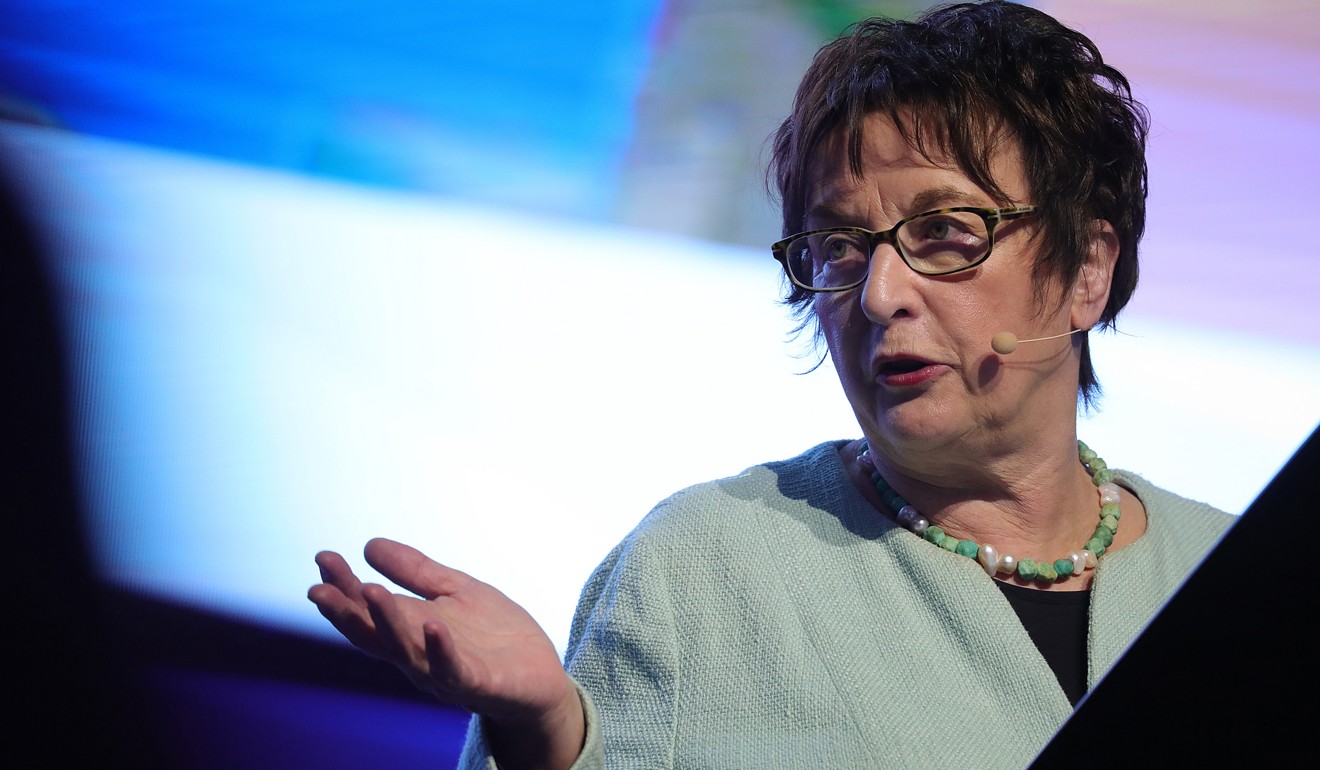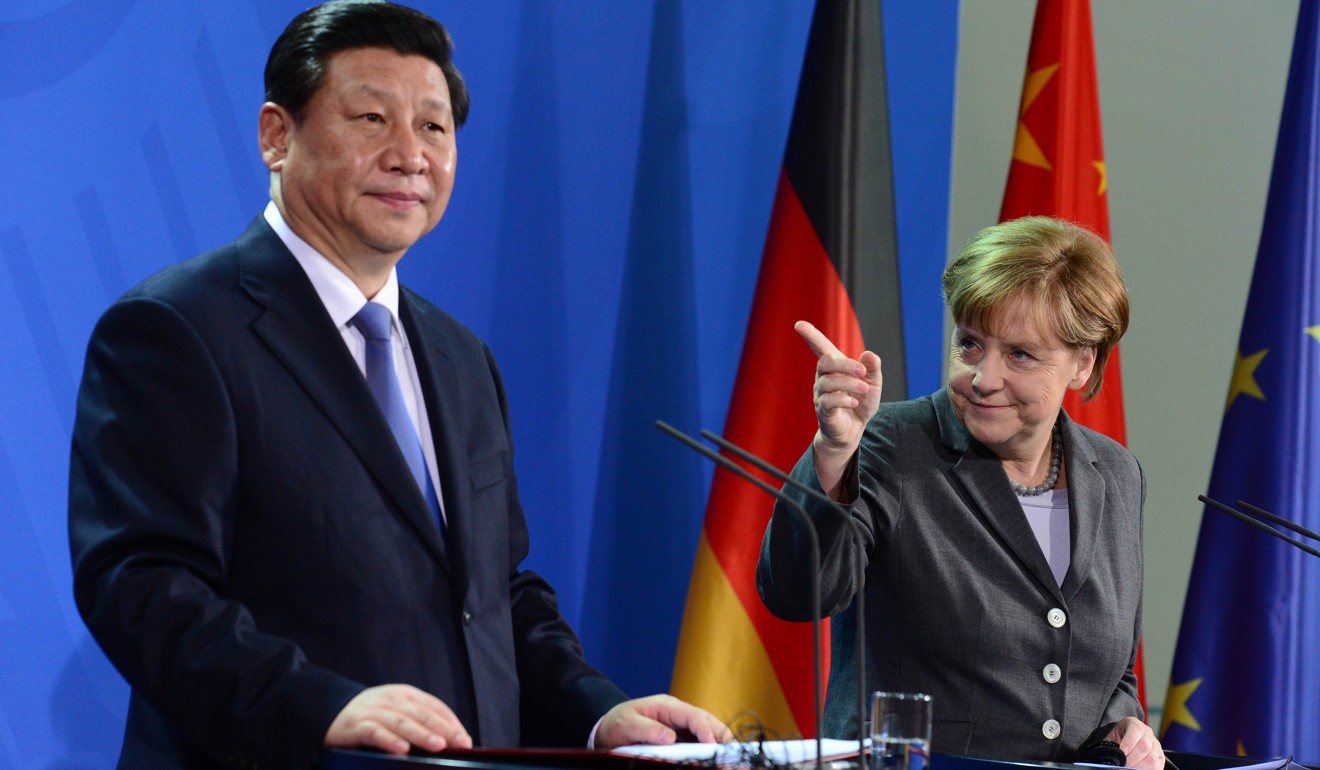
Where the rubber meets the ‘Belt and Road’ – German ambassador answers the big questions
Michael Clauss outlines Germany’s concerns about Beijing’s trade and infrastructure initiative
Will Germany send delegates to the Belt and Road summit? What outcomes do you expect from the forum?
Since it is not possible for Chancellor [Angela] Merkel to attend personally, she will be represented by Federal Minister for Economics and Energy Brigitte Zypries. Many German business leaders will also attend.
The regions covered by the initiative have a lot of potential, but two-thirds of the countries are ranked below investment grade. That means it is difficult for these countries to attract investment for infrastructure, which in turn would be important in order to strengthen economic development and political stability. In that respect the initiative could make a significant contribution to alleviate the root causes of migration. That’s obviously very important to us, because Germany is particularly affected by the refugee crisis. That is one of the reasons why Germany fully supports the belt and road initiative, particularly its potential in the areas of connectivity and free trade. The idea was originated by China. We should now start to develop it into a joint project, with co-ownership for all participants.

Why do some countries seem hesitant to fully embrace the belt and road initiative? What should China do to improve the participation of partner countries?
China will extend its geopolitical influence with the progress of the belt and road initiative. There are concerns among China’s geopolitical rivals, but also among China’s immediate neighbours, who fear that they may become increasingly dependent on China. Another challenge may be funding: private Chinese companies I speak to are somewhat reluctant to invest in countries which are economically or politically unstable, while a number of state-owned enterprises investing overseas are highly leveraged.
If China wants to fully exploit the potential of the belt and road initiatives, the participation of other countries should be on an equal footing. Furthermore, it would be important to respect local and environmental standards. If Chinese enterprises want to convince local populations that they are doing win-win projects, it would be advantageous to include local content, instead of Chinese companies as the only participants and bringing only Chinese workers. China’s experiences investing in Africa are probably insightful.

Are German companies interested in participating? Which problems have they encountered?
German companies could contribute in certain hi-tech aspects of infrastructure construction. Given the many economic and political risks, professional and independent risk assessment is needed, and German companies have expertise to offer in this field. But there seem to be some issues that need to be addressed. I know of companies who have been asked to transfer technology to Chinese partners as a precondition for participating. Forced technology transfer is already an issue in our bilateral economic relationship.
Will Donald Trump’s opposition to current international trade pacts make the belt and road initiative more attractive and push trade and economic ties between Germany and China closer?
The belt and road initiative, despite its vast potential, cannot replace rules-based free-trade agreements. We also need progress on market access and trade liberalisation. On G20 issues, China and Germany, which holds the presidency this year, see eye to eye on most issues. Both countries fully support globalisation, a strong World Trade Organisation and combatting climate change. All in all, there are more and more overlapping interests between China and Germany, because we are both globally leading export nations and thus depend on free trade and market access. A China-EU investment treaty would be the most obvious opportunity to realise these common interests, and we hope the positive signals we get will translate into more flexibility on the Chinese side at the negotiating table. There is growing interest to go even further – towards a China-EU free-trade agreement.

What’s your expectation on market access in China?
We want to see China further open up its markets towards a level playing field. Germany is completely open for Chinese investment, and what we want is reciprocity for German investment in China. Despite President Xi Jinping’s speech in Davos and Premier Li Keqiang’s message of further opening up, we haven’t seen much progress at the administrative level. Despite some government departments trying to find individual solutions to individual complaints, the overall problem of protectionism seems to be getting worse. For example, the planned requirement of an import certificate in the new food safety regulation is more about protection for Chinese producers rather than ensuring food safety.
Will the further development of China’s belt and road projects into Europe become a concern there?
The European Union welcomes investors from China, but they are expected to respect local rules and regulations such as fair and transparent procurement procedures when investing in the EU. There are WTO rules which apply to belt and road projects and even stricter EU rules, for example in the railway sector. This is why the EU has launched an investigation into the planned Belgrade-Budapest railway project. These rules have to be followed by everyone, including German and Chinese companies.

